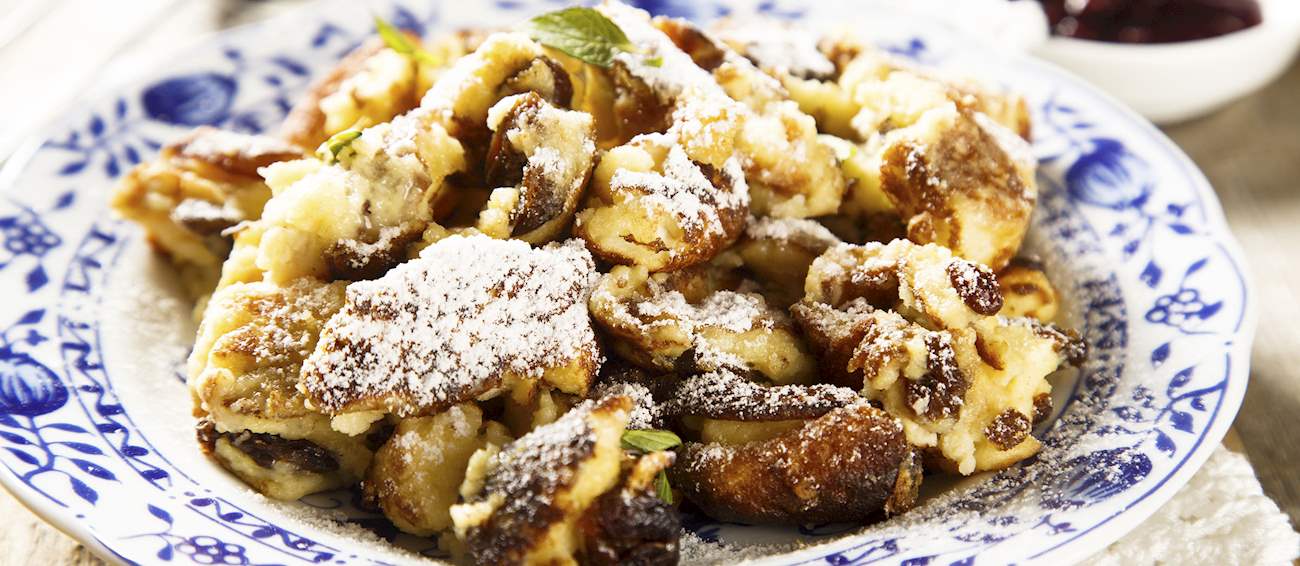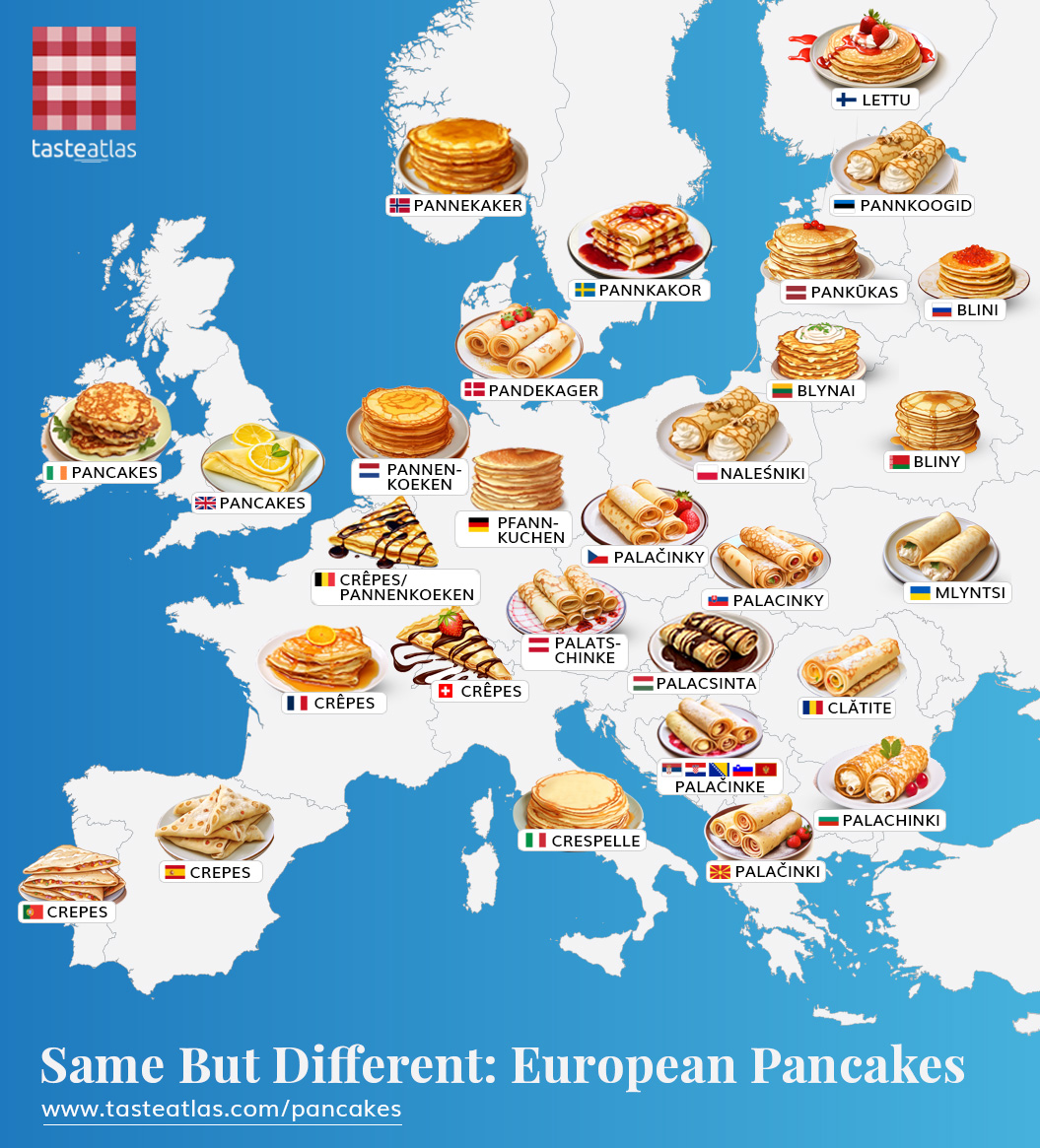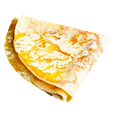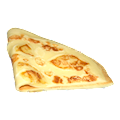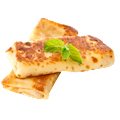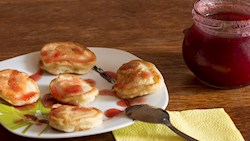These thin pancakes are made with wheat flour, and have origins in the French region of Brittany. Although they are a French staple and a national dish, crêpes are so popular that they have spread worldwide since the turn of the 20th century, when white wheat flour became affordable.
These delectable treats are made with flour, eggs, milk, and butter whipped into a thin batter, which is then poured in a crêpe pan and fried. The tradition is to flip them in the air as they cook, and they say that if you catch it in the pan, your family will be well-off for the rest of the year.
VARIATIONS OF Crêpes
MOST ICONIC Crêpes
View moreAlso known as the Emperor's mess, this Austrian dessert can be described as a fluffy, lightly caramelized, scrambled pancake. Legend has it that kaiserschmarrn was the favorite dessert of Kaiser Franz Joseph I, after whom it was named.
The dish is traditionally served either with zwetschkenröster (plum compote) or with a big spoonful of apple, pear, or berry preserve. Lavishly dusted with icing sugar, kaiserschmarrn is the perfect comfort food, indeed fit for an emperor and easily one of the best desserts Austria has to offer.
Apart from the beloved, old-fashioned kaiserschmarrn, depending on the filling, some of the modern takes on this Austrian classic include apfelschmarrn (apples), kirschschmarrn (cherries), mirabellenschmarrn (mirabelle plums), nußschmarrn (walnuts, almonds, hazelnuts) and sauerrahmschmarrn (sour cream).
MOST ICONIC Kaiserschmarrn
View moreCrêpes sucrées are sweet crepes, a type of very thin pancake originating from France. The term "sucrées" means "sugared" in French, indicating that these crepes are meant to be served with sweet fillings or toppings. They are made from a simple batter consisting of flour, milk, eggs, a pinch of salt, and sometimes a bit of sugar and butter.
Unlike their savory counterpart, known as "crêpes salées" (or "galettes" in some regions of France), sweet crêpes are usually made with white wheat flour and often have a bit of sugar added to the batter. Sweet crepes can be filled or topped with a variety of ingredients such as powdered sugar, whipped cream, fruit preserves, fresh fruits, nutella, honey, and maple syrup.
VARIATIONS OF Crêpes sucrées
MAIN INGREDIENTS
Nutella crêpes is a popular variation of a sweet crêpe that is generously spread with Nutella, a hazelnut cocoa spread. This indulgent treat combines the soft, warm texture of a freshly made crêpe with the rich, creamy flavor of Nutella, making it a favorite among both children and adults.
A basic crêpe batter made with flour, eggs, milk, a pinch of salt, and sometimes a little sugar and vanilla for added sweetness is cooked on a flat griddle or in a crêpe pan to create a thin pancake. Once the crêpe is cooked to a light golden brown and is still hot, a generous amount of Nutella is spread over one-half or the entire surface of the crêpe.
MAIN INGREDIENTS
Crêpes Normande can best be described as apple pie inside a crêpe. For the filling, fresh, tart apples are browned in butter, sugar, and cinnamon, while the crêpes are made with a combination of flour, milk, eggs, sugar, and a pinch of salt.
It is recommended to serve the crêpes topped with whipped cream, accompanied by a scoop of ice cream on the side, and it couldn't hurt to drizzle them with sweet caramel syrup to finish the whole thing.
These traditional Russian pancakes are prepared with flour, eggs, milk, yeast, and a pinch of salt. What distinguishes them from other pancakes is the addition of yeast, since similar equivalents mostly do not add any leavening agents. The batter is poured over a hot pan, shaped into a circle, and fried for a couple of minutes on both sides.
The tradition of preparing this traditional Russian dish originates from ancient times: it was a ceremonial dish, served during the pagan holiday called Maslenitsa – a week-long festivity praising the end of winter and the celebration of spring.
MOST ICONIC Blini
View moreSyrniki is a dessert consisting of fried cottage cheese pancakes that are usually garnished with honey, fruit jam, sour cream, or applesauce. It is part of the Russian (where it's sometimes also called tvorozhniki), Belarusian, Ukrainian, Latvian and Lithuanian cuisine.
Cottage cheese is traditionally first swetened with sugar, then combined with flour into a dough which is fried in hot oil until it develops a golden-brown color. Syrniki can be served for breakfast or consumed as a tasty dessert after a large meal.
MOST ICONIC Syrniki
View morePlacki ziemniaczane are the well-known potato pancakes, a common and straightforward dish enjoyed in all parts of Poland. The combination of grated potatoes and onions, incorporated with eggs and occasionally flour, form the base of the dish.
It is highly versatile, and it can be adapted with crushed garlic or spices such as marjoram, parsley, and chives, to satisfy every taste. Potato pancakes are round and small in size, similar to American pancakes, and usually fried in shallow oil.
With dark and crispy skin and spongy and soft interior, this quick and adaptable dish is a staple in every Polish household.
MOST ICONIC Placki ziemniaczane
View moreBulviniai blynai are traditional, crispy and mouth-watering Lithuanian potato pancakes. The combination of grated potatoes, diced onions, eggs, and flour is seasoned with salt and pepper and sometimes flavored with lemon juice before being fried until it develops a beautiful, golden color.
Popular with both old and young, bulviniai blynai are served with sour cream, applesauce, or jam. This treat is often served at the Christmas table, and it is also a beloved Hannukkah snack.
These thin, crispy potato pancakes are traditional Slovak snacks that are usually enjoyed during the Christmas festivities and Lent. They are made with a soft potato dough which is rolled into flat circular shapes and dry-baked until crispy and golden.
Even though they are traditionally consumed as a savory snack filled with sauerkraut or minced meat, certain regional varieties are enjoyed as a sweet treat that is spread with fruit preserves and dusted with poppy seeds, sugar, and melted butter.
TasteAtlas food rankings are based on the ratings of the TasteAtlas audience, with a series of mechanisms that recognize real users and that ignore bot, nationalist or local patriotic ratings, and give additional value to the ratings of users that the system recognizes as knowledgeable. For the “Top 78 European Pancakes” list until March 21, 2025, 5,238 ratings were recorded, of which 4,217 were recognized by the system as legitimate. TasteAtlas Rankings should not be seen as the final global conclusion about food. Their purpose is to promote excellent local foods, instill pride in traditional dishes, and arouse curiosity about dishes you haven’t tried.
